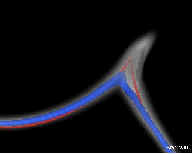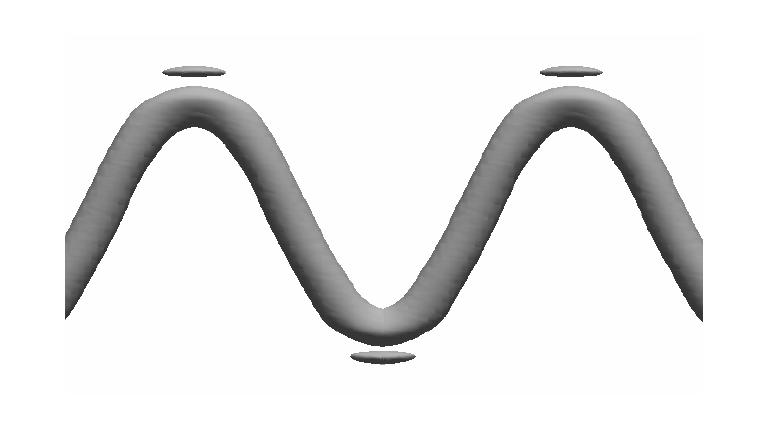| Tufts Institute of Cosmology | Research Interests | ||||
|
|
|||||
|
-Ultra-High Energy Cosmic Rays The origin of the highest energy cosmic rays (Particles with energies above E>10^20 eV) remains a puzzle, more than thirty years since the first observation in 1962. This puzzle seems to have two different parts. The first one has to do with the mechanism necessary to accelerate this particles.Conventional astrophysical sites have very serious difficulties to accommodate this energies within the usual Fermi acceleration mechanisms. This fact has motivated the search for non-acceleration models, in which the high energy cosmic rays are produced by the decay of a very heavy particle. Topological defects are attractive candidates for this scenario.The second ingredient in the puzzle is the so-called GZK (Greisen-Zapsepin-Kuzmin) effect, which states that particles above 4*10^19 eV should not be able to propagate on the 3 K cosmic microwave background more than 50 Mpc. (The original papers treated the case of a proton, but since then it has been studied for other potential candidates, photons, heavy nuclei, and in this cases the effect is more important, imposing even stronger limits on the distance from which this particles can come from.)-Topological Defects Topological defects are stable solitonic configurations of the fields which may have been left behind by a cosmological phase transition in the early universe. Depending on the particle physics model they could be pointlike objects (monopoles), string like (cosmic strings), or sheets (domain walls).Typically they are associated with a Grand Unified Theory, GUT, at a very high energy scale 10^16 GeV. Due to their topological stability these objects can retain their energy for very long times and release quanta of their constituents, typically with GUT scale masses, which in turn decay to produce the observed particles. As part of my research work, I studied the viability of several scenarios for the origin of the ultra-high energy cosmic rays connected with various topological defect models. This is a brief explanation. -Monopole-Antimonopole
pairs.
In this work we
proposed a scenario in which monopoles and antimonopoles are connected
by strings formed at a low energy phase transition (~ 100 GeV). The
bound states decay by gravitational radiation, with lifetimes comparable
with the age of the universe. One of the important signatures of this
model is that these pairs of monopoles will behave as cold dark matter,
clustering on the galactic halo, and therefore avoiding the GZK problem.
On the other hand this mechanism avoids the problems of the standard
monopolonium scenario, since the binding of monopoles and antimonopoles
is perfectly efficient, and therefore a very low density of monopoles is
sufficient to explain the UHECR by their final annihilation. -Ordinary
Cosmic Strings Cusps.
It has been
recognized for quite a long time that the motion of relativistic strings
can be studied within the Nambu-Goto approximation. In this
approximation the equations of motion are easily solved in terms of
solutions of the 2-d wave equation with a couple of constraints that
have to do with our gauge conditions on the worldsheet of the string. On
the other hand this motion also predicts the existence of points where
the string would turn back on itself and would move at the speed of
light. This points are called cusps. Massive
Radiation from Cosmic Strings.
-Superconducting Cosmic Strings. It is now well known that there is a wide class of particle
physics models where cosmic strings would behave as superconducting wires. This internal degree of freedom opens up
a variety of interesting effects. In particular, superconducting strings may have stable configurations, vortons and springs,
which could contribute to the dark matter in the universe, or put constraints on the particle physics models that give rise
to this type of strings. On the other hand these models constitute an obvious candidate for high energy particle
phenomena in the universe, and they have been studied in relation to ultra-high energy cosmic rays and gamma ray bursts.
|
|
||||
|
|
|||||
|
"If you eliminate the impossible, whatever remains, no matter how improbable, must be the truth.” Sherlock Holmes
|
|||||
|
|
|||||

